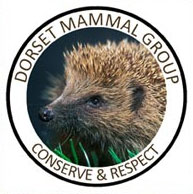Biology
The only species of otter that inhabits the British Isles is the Eurasian Otter (Lutra lutra). This species occurs right across the Northern Hemisphere, from the UK to South east Asia and from North Africa up to the Arctic circle. However, it has declined over much of this range and is now extinct or threatened in many areas.
In the UK, otter populations declined during the third quarter of the twentieth century but least so in Wales and South West England. Recovery during the last quarter, continuing to the present (2012) time, sees it once again present in all counties although still at low levels in central and south-east England.

Taxonomy
The Eurasian otter belongs to the family Mustelidae which is the largest of the order Carnivora. The family includes badgers and stoats among many other low-slung hunters. Worldwide, there are thirteen species of otter in a subfamily called Lutrinae.
Body
- Long slender body with a thick, long, tapering, flattened tail.
- Brown body with a light underside.
- White throat patches of variable extent.
- Total length: 1 – 1.3m.
- Tail length: up to 45cm.
- Weight male: 10.1kg average, 11kg max.
- Weight female: 7.0kg average, 30% smaller than male.
- Otters swim gracefully and low in the water with only their eyes, nose and small ears on their flat heads showing above the surface leaving a U-shaped wake.
- The broad muzzle has long stiff vibrissae (whiskers).
- Feet are comparatively large and more than half webbed.
- When wet the fur looks spiky due to the coarse waterproof guard hairs and shorter denser insulating fur.
Life Cycle
- Seasonal peaks occur regionally, but otters can breed year round.
- Male territories cover several females, but otters usually only come together to mate.
- Gestation period is 63 days.
- 1-5 (2/3 average) cubs are born in a holt.
- Cubs are weaned by 12 weeks.
- They start to catch food after 4 months but spend 7-12 months with their family group to learn to fish properly.
- Sexual maturity is achieved after 2 years.
- Otters may (rarely) live as long as 15 years.
Diet
- Otters primarily eat fish, although other animals are taken depending on regional and seasonal availability.
- Eel, roach and perch are slower swimming species and therefore caught more frequently.
- Adults require on average 1kg of food per day.
Behaviour
- Typically 10-40 second dives.
- Otters can travel 8-16km per night.
- Male range: 70km
- Female range: 25-40km
- Otters spend a lot of time resting.
- Each otter may have up to 30 rest sites in its territory and may spend only 30% of its time in an active phase and this includes further resting and grooming time.
Habitat and Ecology
Otter population distribution is affected by the habitat. A key feature is the presence of secure breeding and rest sites.
Otters occur in rivers, streams, lakes, marshes and on the coast.
Whilst rivers provide the bulk of vital food supplies, smaller streams are also used to access more sheltered habitat and to cross over into different river basins. In the UK, a decline in the eel and other fish populations may have made it necessary for otters to spend more time exploring watercourse of all sizes, including in daylight hours.
The coastal populations of Shetland and Scotland exhibit distinct behavioural differences when compared to otters in England and Wales: they feed much more in salt water and their feeding pattern is dictated by the tides rather than by daylight. However, it is possible that such behaviour might become more widespread in the south too.
Holts
Natural holts often consist of natural cavities, such as burrows or the root systems of bankside trees.
Above ground resting places range from vegetation lined depressions to piles of sticks lined with bedding material.

